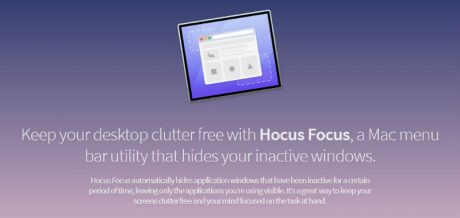

There is not much good to be said about trying to focus a camera through the viewfinder with the unaided eye. It will also help preserve your vision in the eye under the eye patch.įatigue, allergies, astigmatism, and anything that can affect your eyesight, can affect your focusing. For some reason, probably physiological, the brain can tell when you have one eye closed and vision in the other eye suffers. This simple procedure will help in preventing strain in the eye you are using.
#Digital olivesoftware hocus focus Patch#
The eye patch will prevent light and distractions, but preserve your vision. Wear an eye patch on the eye not doing the focusing and keep the eye under the patch open. Once you know what the point of focus looks like, practice coming directly to focus and then stopping dead.

Become familiar with what the point of best focus looks like as you rack through. If you do try to focus by eye, take the time to rack the focuser back and forth through the point of best apparent visual focus.

This method can also lead to some very uncomfortable positions just trying to view through the camera, for instance when refractors are pointed overhead, and when Schmidt-Cassegrains are pointed anywhere near the north celestial pole. Problems can occur with this method though, especially for users of Schmidt Cassegrains, if the primary mirror moves during the slewing after focusing.įocusing through the camera's viewfinder also assumes that the viewfinder optical system of the camera is in collimation, that the focusing screen is in the correct position, and that the mirror is not out of alignment. If you are trying to focus on an extremely dim deep-sky object or the field you want to photograph does not have any bright or moderately bright stars in it, some experts recommend you slew the telescope over to the nearest bright star, focus on that, and then slew the telescope back. If you do attempt to focus with your unaided eye through the viewfinder, at least try to pick a star that is not too bright. We can pick a bright star to try to focus on, but the light from a bright star irradiates and spreads in the ground glass of the focusing screen making it difficult to tell when it is in focus. Most screens, which seem quite bright for daytime work with fast lenses that focus with the diaphragm wide open at f/2.8 or so, suddenly seem quite dark at prime focus of an f/8 telescope. The trouble is, with a camera, the image is projected onto the ground glass of the focusing screen first.

When we look through a telescope to visually observe we usually don't have any trouble at all focusing the eyepiece, unfortunately the same cannot be said for focusing a camera. It's not that accurate for the bright stuff either. When we get to the faint stuff, we find that it is very difficult to focus this way. It may be easy, but it is not necessarily accurate with repeatable consistency. It would seem that the easiest way to focus is to just look through the viewfinder of the camera and try to focus.
#Digital olivesoftware hocus focus software#
These different methods range in accuracy from the least accurate - focusing with the unaided eye on the ground glass of the camera through the pentaprism, to the most accurate: examining a star in an actual test exposure with software metrics. The better methods are also more consistently repeatable, which is an important consideration because of the time and effort we spend on our hobby. The > best way is by using magnified Live View to focus your DSLR. Today, the most accurate method of focusing is with Software Metrics, but this requires a computer > to the scope. Many of these methods were developed during the days of film astrophotography and don't apply to digital astrophotography. There are many different methods of focusing, and some work better than others.


 0 kommentar(er)
0 kommentar(er)
